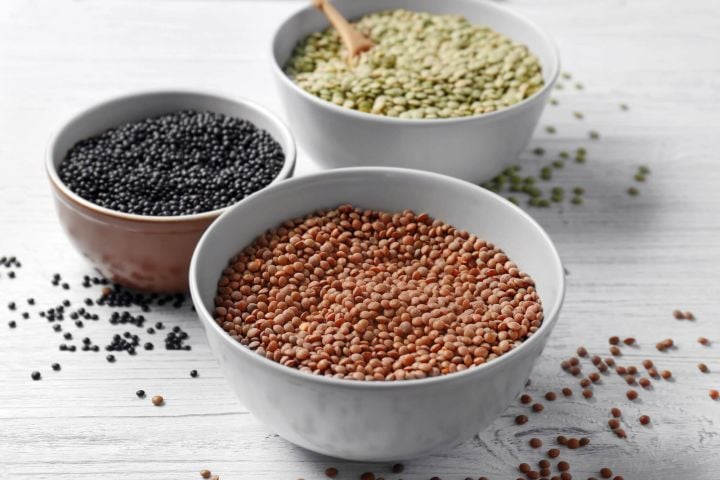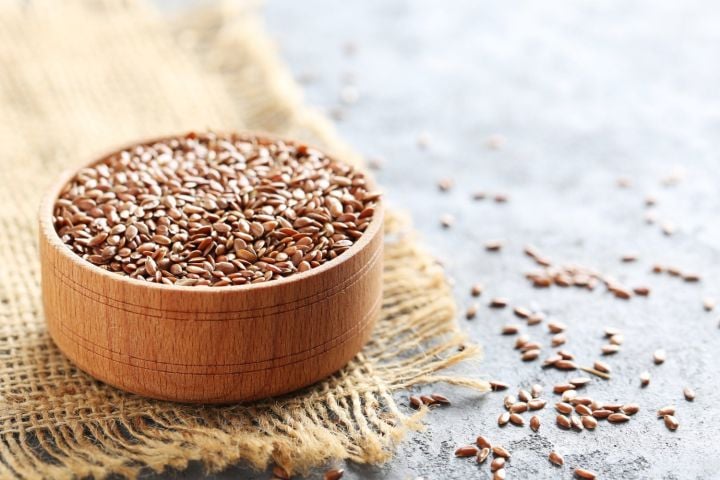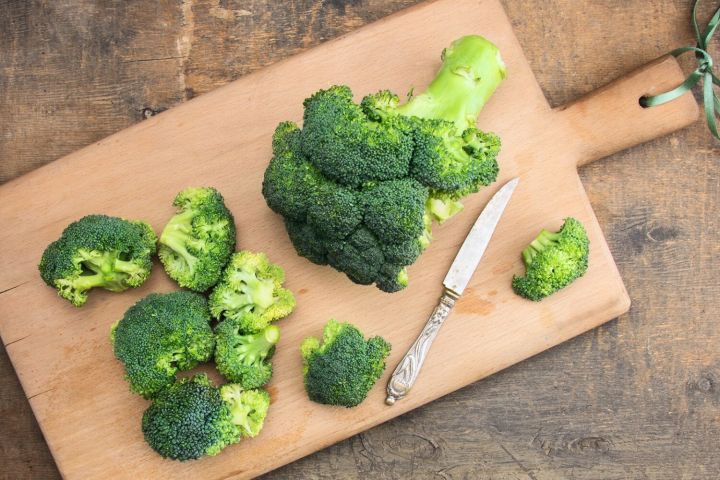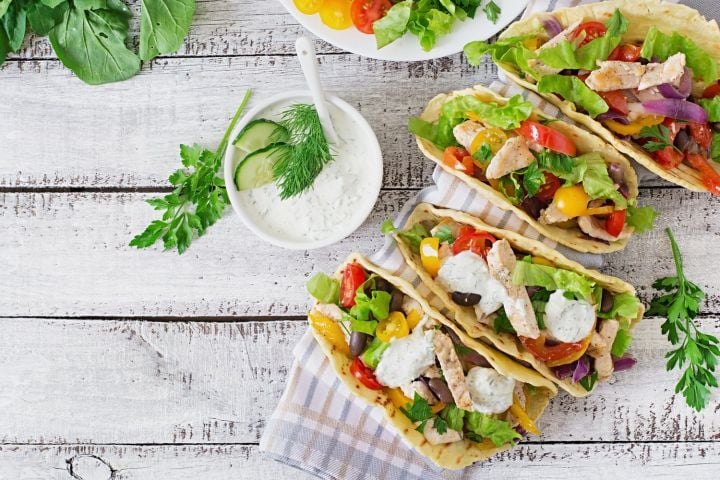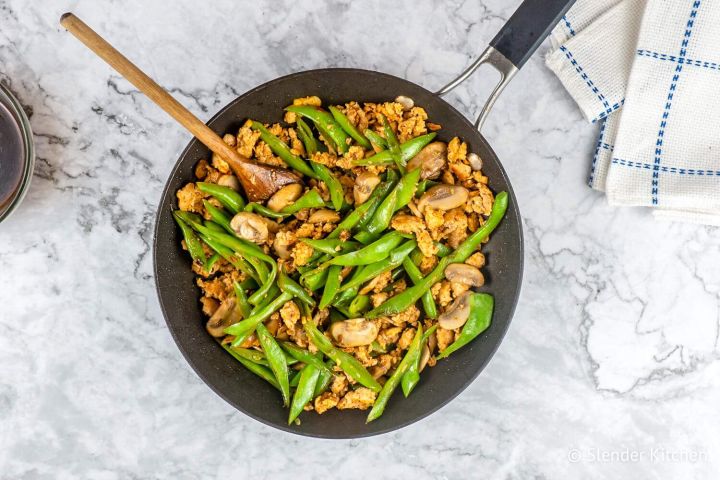Beginner's Guide to Meal Planning
The ultimate resource to start meal planning, get healthy, and make meal time stress free and easy. Learn how to meal plan with ease.

A Beginner’s Guide to Healthy Meal Planning is everything you need to know to start meal planning now.
Meal planning is one of the most perfect ways to help you stay on track with your healthy eating or weight maintenance goals. When you utilize meal planning, you are able to choose what foods you want to eat, and to make sure that you stay within your calorie or nutrition needs without having to recalculate them for every meal or wonder what your next meal will consist of.
Meal planning, in its simplest form, is a tactic for preparing meals ahead of time that people employ when they want to take the guesswork out of the age old question "What's for dinner"? (or breakfast or lunch) for the week (or even a few days) ahead.
Why Is Meal Planning Important?
If this piqued your interest, but you're still skeptical, then know this: Meal planning isn't a four-letter word. Do not be afraid. It's not just for super organized Type A personalities or for someone who LOVEs cooking and planning. It is for everyone.
However, while meal planning IS for everyone, it happens to be most utilized by the busiest among us. The stay-at-home-moms with four kids who are over-scheduled. The dad who loves to cook for his family but also has to stay late at work once in a while and try to coach his daughter's soccer team. The couple who works long hours but is sick of eating takeout.
You get my drift. It's true, meal planning does take a little more time up front in the "planning" stage once a week or so. However, the time you save during the week more than makes up for it. Meal planning is a great way to keep you on track and accountable to your health while also saving time (and hopefully money, too). Plus, planning your meals can mean less food waste, because you're only buying the food you plan on eating.

Let the following steps serve as your meal planning guide and help to turn you from a meal planning skeptic to a savvy, meal planning powerhouse.
1. Consider Your "Why"
If you're still reading, that means you're interested in learning more about meal planning, am I right? Good! I think this first step is the easy part. Eating healthy is hard without a plan. There are too many obstacles in your way — the vending machines at work, the birthday cake in the break room, the happy hour with book club, the bag of chips your child left in the car's cup holder…
So now consider how you could more easily avoid temptation through meal planning. Do you want to have complete, healthy meals ready to be made without trying to pull the old proverbial dinner rabbit out of a hat everyday? Do you want to make sure you're not eating the same old, same old all the time? Do you want to incorporate more vegetables into your diet or go meatless all together?
Or, are you on a very specific diet plan, like Whole30 or Keto, in which paying close attention to your ingredients and what you eat is key to your success? Then these are all valid reasons for trying meal planning.
2. Take into Account Everyone's Taste Preferences
If you're only cooking for yourself then this step is a cinch. However, I recommend you still take some notes. I can tell you, it's a whole lot easier to think about what it is you're trying to accomplish with your diet when you are able to quietly and calmly consider your options than when you are, let's say, trying to grocery shop after having skipped lunch. Been there. Nearly impossible to leave without a pack of donuts.
Before you even whip out a cookbook or look to Pinterest for easy meal planning recipes, think about what you enjoy eating. Do you want more zucchini in your life? Are you fond of chicken for dinner? What kinds of foods do you like together? What kinds of foods do you not like together?
The same goes for whoever else you will be cooking for. And, if you're the parent in charge of the meals, well, then also consider not only what your kids like to eat but also what you want them to eat.
3. Think About Meal Frequency
Meal planning doesn't have to be for every meal — although it certainly can. If you have the most trouble coming up with dinner every night, then only planning your dinners makes the most sense. If you'd like to have quick-and-easy breakfasts, then be sure to research the best recipes to make that happen for you. If you want to plan all your meals in advance, then you can do that, too.
Also consider how often you're going to be eating at home and how much time you have for cooking a meal. If you only regularly have three meals a weeknight together then only plan those meals. There's no sense in planning meals for days you're not going to be there to cook them. And if you only have 30 minutes on those nights to cook, then take that time into account, too.

4. Find Recipes
I like to start by writing a general list of what I'm looking for for the week: Three chicken dinners; One pasta dish; Two egg breakfasts, etc. When you know how many recipes to look for, you can go out and get them.
Not sure where to start? Find meal ideas easily by googling "meal planning," by looking on Pinterest, or by using recipes you know you and your family already love. You can also find meal planning ideas right here on Slender Kitchen.
So, for instance, you might search for "healthy meal plans," "weekly meal planning," "healthy dinners," or "quick-and-easy breakfast ideas." Once you've decided what kinds of meals you want, then finding those can be as easy as asking the internet (or your voice assistant device).
As you go through recipes and get more comfortable with meal planning, be sure to make note of which meals worked and which didn't. Figure out an easy filing system for those that did work and that you'd like to come back to again and again.
5. Make a List
Some sites, like this one, will offer customizable meal plans that include ingredient and shopping lists. This can be great if you are busy and want as many steps as possible taken care of for your foray into meal planning.
However, some people like the more "hands-on" approach of searching up recipes and writing down ingredients on a list or in an app that you can take with you to the store. My advice for this is to think about not only what you want to eat but how the next meal can also use similar ingredients.
In that way, you're not running all over the store trying to purchase every kind of meat, vegetable, and dry good you can for 21 different meals. Also, if you don't mind eating the same meal for dinner three nights in a row, then take that into account too — that's less actual items on your list and fewer stops in the store.
For instance, if you've decided that Monday night's dinner is Roasted Chicken and Potatoes with Broccoli, then you can use some of the leftover chicken for Tuesday's Blackened Chicken Salad. Or, if you want to make up a batch of Healthy Ground Turkey Chili on Wednesday consider purchasing extra ground turkey so you'll have enough to make Zucchini and Ground Turkey Pizza Boats for Thursday, and so on. And, don't forget to take into account leftovers or repeat meals when making your list. Be sure to double or even triple some recipes if you plan on having them more than once.
Once you've figured out which meals you want on which days, add all of your ingredients to a list and get shopping. I've also found it helps to write down the meals on a calendar. You can print a blank one off at home or use any calendar you have and put it right on the fridge. That way, you won't forget what's on the menu every day.

6. Shop
If you have the time to organize your list, it's a good idea to write down your ingredients by aisle or section of the grocery store. There are printable grocery lists you can find online that have the grocery sections all laid out for you already, or you can use an app. Then, make sure you've incorporated any coupons that you'd like to use by matching any store specials to the meals you want to make.
Remember that you're going to the store with a plan and a list and to do your best to stick to that plan and list. There's always room for treats in life, but for the first couple of weeks that you're trying meal planning, try to only stick to your list — and your budget.
7. Prep and Cook
Here's the fun part — prepping and cooking according to the recipe. If you are no stranger to the kitchen, then this should be a breeze. If you are new to the whole cooking thing, cut yourself some slack. While some recipes may say they take only 30 minutes, remember it could take you a little longer to get the hang of all the cutting, prepping, and cooking. Stick it out for a couple of weeks and see if it doesn't get easier — and more enjoyable.

What Foods Are Good to Meal Plan?
I believe the whole reason to even do meal planning is to eat healthier and to save money and time. Therefore, it really does no good to plan out a four-course dinner better suited for a five-star restaurant. That's not really helping anyone, and you're going to end up hate meal planning altogether. I think the best meal planning recipes contain foods that:
- You (or your family) enjoy eating.
- Meet your health and fitness goals.
- Are done in 30 minutes or less.
- Can be cooked in a slow-cooker or Instant Pot.
- Call for meats that cook quickly (like ground meat or chicken).
- Require quick-cooking grains like brown rice, quinoa, whole-wheat pasta, or oats.
- Are egg-based recipes.
- Contain some sort of protein (animal or vegetable).
- Contain some sort of fruit or vegetable.
- Contain very little saturated fat or extra sugar.
I do hope that you give meal planning a try. It really is a time-saver and can help you learn so many things — from how to eat healthy to how to cook healthy and from how to grocery shop smarter to how to prevent food waste. If you want to learn more about how Slender Kitchen's meal plans can help to make healthy eating easier, click here.


